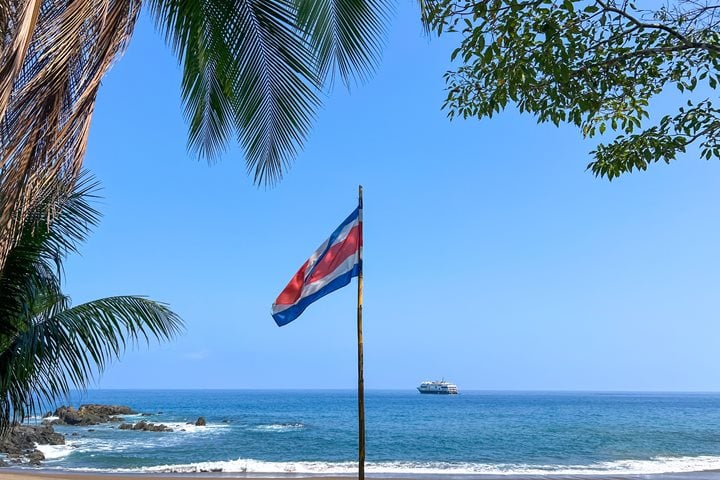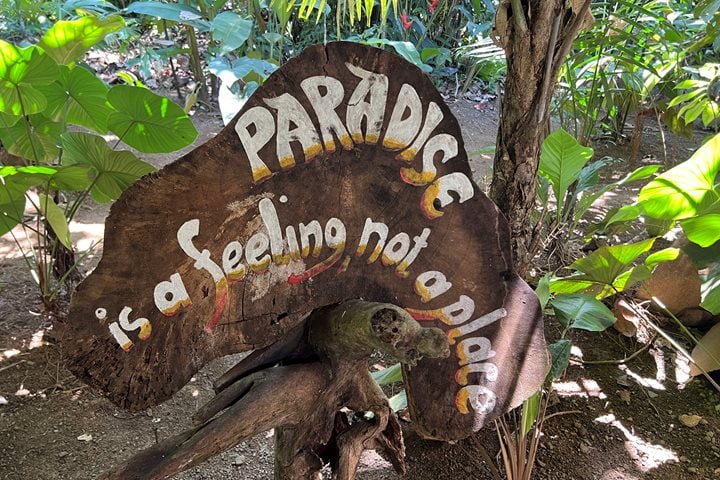Granito de Oro Islet, Coiba National Park, Panama
After sailing through the night, National Geographic Sea Lion dropped its anchor next to a “comic strip like” islet in Coiba National Park. This islet, known as Granito de Oro (“Little Grain of Gold”), is a good snorkeling spot where four tall palms emerge from upon the shrubs and are surrounded with paradisiac white sand and semi-emerging volcanic rocks. The sun was bright and the clouds were spread out allowing a blue sky to peek through, it confirmed to us the nice weather we were going to have. Our last day of the year started with this spectacular scenery.
Coiba National Park is an isolated marine preserve 14 miles off the Pacific coast of Panama. It has an extension of around 675,000 acres, of which approximately 125,000 encompass the 194 square mile Island of Coiba and 38 other small islands and islets; all the rest is marine zone. This park is part of an important marine corridor that connects the Islands of Cocos, Malpelo, Gorgona and Galápagos; from Costa Rica down to Ecuador. It’s here in Coiba where you can find the second largest coral reef in the Eastern Pacific. It is the perfect paradise for nature lovers. Before being declared a national park it was known as “La Isla del Diablo”, Devil’s Island for being a penal colony since 1919. The prison began to close in 1990 to make way for the National Park. In 2005, UNESCO declared the park a World Heritage Site and the last convict was released.
Right after breakfast, we took hold of our gear and went ashore. As we got close to the islet we could see under the clear water schools of fishes and an interesting garden of corals. The technicolor underwater world began to reveal itself as we swam around. Rainbow wrasses, bicolored parrot fish, Pacific crevale jacks, Moorish idols, white tipped sharks and hawks billed turtles amid other species of reef dwelling fish proved to us that indeed we were in a hedonic paradise.
The morning passed and we had to return to the ship and weigh anchor. 190 nautical miles had to be covered in order to get to our next destination. As we sailed to the east, several pods of Pantropical spotted dolphins came to bow-ride National Geographic Sea Lion giving us our farewell. There was no better way to say “Goodbye 2011 and welcome 2012” than sailing into a lovely sunset.






